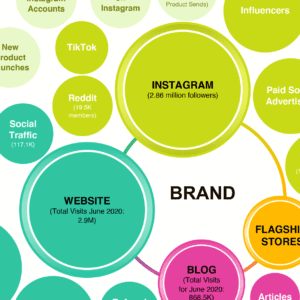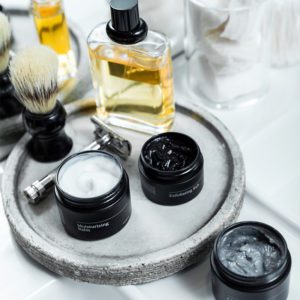The entertainment industry literally lives or dies by the quality and speed of its creative innovation. Even the most successful content has a relatively short ‘product’ lifecycle, and the pressure for new hit content never goes away. Seeking a better, more creative approach to innovation for our clients, we dove deeply into the psyche of executives from entertainment companies like Miramax, Spike and Comedy Central who thrive on this kind of creative pressure to innovate.
What we learned from some of the best minds inside reality TV, comedy cable, book publishing, digital shorts, advertising, movies, music and late-night TV comedy is that success doesn’t come from just luck or genius. Instead, it’s the result of a unique combination of passion, discipline, management and planning. We gathered the most thought-provoking insights from these entertainment pros and distilled them into 5 innovation lessons for any company trying to harness the power of creativity and manage the innovation stage gate process:
Lesson #1
The development team is golden.
This team is the critical bridge between business and creative departments, so it’s staffed with people who can identify new ideas and who understand the business side.
• The team interacts with marketing staff to decide what kind of “products” are needed to build the business, audience, consumers or advertisers. Then they work with creatives to craft content that fulfills that mission. The team essentially connects what the creative talent is capable of and what the market needs.
• Takeaway: A company’s innovation is only as good as its development team. Members should be handpicked and nurtured for their intuitive skill at marrying business needs and strong creative ideas.
• “In our business, it’s not just numbers. You have to have intuition.” —Cable TV Developer
Lesson #2
Specialization and experience reduce risk.
• Over time, developers gain a deep and second-nature understanding of what makes a great idea. Specialization accelerates this process. Developers who concentrate on a genre — such as comedy for guys in their 20s or romance novels for women — climb the learning curve faster and gain a sharper understanding of what audiences will buy. Developers who have worked in their genre for at least 10 years can zero in on stellar creative ideas even in the rough.
• Takeaway: Companies shouldn’t let their development team operate with a revolving door, rotating people in and out. Instead they should build a seasoned, professional group that has lots of experience with bench strength at knowing the genre’s consumer, brand and what makes a new product a hit.
• “I’ve been doing this for 10 years or so by this point. So I can look at 30 pages of a script and tell you if I think it’s well written or not. Just like a lawyer can look at a contract and tell you if it’s a good contract.” —Developer, Films
Lesson #3
Finding great ideas is often a numbers game.
• The more creative ideas a developer reviews, the higher the chances of finding a diamond in the rough. The best developers are constantly hunting for ideas, looking to both internal and external sources. For instance, cable TV developers steadily troll agents, books, YouTube, websites, clubs – all with the goal of finding the spark of a new, fresh successful idea.
• Takeaway: Development teams should have a system for regularly reviewing ideas from a variety of sources beyond R&D, such as internal brand teams, external innovation firms, a panel of creative employees and/or a panel of consumers.
• “Typically we hear 1,000 pitches per year and we purchase or develop about 20. About ten make it to the air.” —Network TV Developer
Lesson #4
Creatives propose their ideas in a competitive pitch.
• In the world of entertainment, creatives “sell” their ideas to developers in a competitive process, which puts the ideas under pressure and tends to improve them. Developers are then forced to quickly pick the ideas they passionately believe have the best potential. At a cable TV network, for instance, all ideas go through a rigorous internal pitching process, so the winning ideas are almost bulletproof when they are finally pitched to the top brass.
• Takeaway: Competitive pitching separates the wheat from the chaff early so staff can focus their resources on the best ideas.
• “Most of the time people in my position are saying ‘no’ all day long. It’s usually pretty obvious when it’s a ‘yes’.” —Film Developer
Lesson #5
A good portfolio is balanced between low-risk and high-risk ideas.
• Developers balance sure-bet formats with higher-risk potential big hits in their mix of creative content. Sure-bets keep revenue stable while potential hits keep the portfolio exciting and position the company on the cutting edge.
• Takeaway: A pipeline that’s skewed to either risky, potential hits or safe predictable product launches will stall growth. Companies need a balanced mix of ideas compiled by seasoned innovators.
• “We look for two different things – shows that will deliver a solid number every week, week after week, and the swing-for-the-fences ideas.” —Reality TV show developer
Developing brilliant innovative ideas – whether it’s the next blockbuster comedy series or the next breakout beverage – can seem incredibly random. But our research in the mercurial entertainment field shows it’s actually just the opposite. For Comedy Central’s Development Team or Lorne Michaels’ Saturday Night Live writers, being funny isn’t a slapstick accident. It’s a skill and craft with a rigorous process that’s been owned and honed with passion.
We’ve seen time and time again that there’s a clear-headed, disciplined process to uncovering what the audience wants. The great news is that any company with the same creative mindset and disciplined brand innovation strategy can increase the odds of inventing fresh, exciting ideas that wow their market – and maybe even create a blockbuster or two.
For more information about leading trends in creative innovation please sign up for our newsletter , connect with us on LinkedIn or contact us directly at 203-276-6262.


























